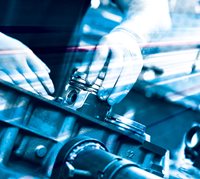 In some minds the terms ‘remanufacturing’ and’ reconditioning’ can mean the same thing. However, as the UK's leading remanufacturer of engines, gearboxes, cylinder heads and turbochargers, Ivor Searle, explains, there’s a world of difference.
In some minds the terms ‘remanufacturing’ and’ reconditioning’ can mean the same thing. However, as the UK's leading remanufacturer of engines, gearboxes, cylinder heads and turbochargers, Ivor Searle, explains, there’s a world of difference.
Remanufacturing and reconditioning are sometimes used as equivalent terms where engines are concerned, however they have quite separate meanings. Put simply, a reconditioned engine is a unit that has been stripped or disassembled, cleaned and may have had some damaged components replaced prior to being rebuilt.
In contrast, a remanufactured engine has been returned to the vehicle manufacturer’s original factory specification. As a result, remanufactured engines provide levels of performance, reliability and lifespan that are equal to and, in many instances exceed, those of the original engine. Most importantly, a remanufactured unit is not a reconditioned or repaired engine.
Furthermore, a remanufactured engine is required to meet a specific standard for it to be described as such under BSI AU 257:2002. This is a British Standard Automobile Series Code of Practice that applies to the remanufacturing of internal combustion engines. The standard fully details the procedures and operations for the remanufacturing of both spark (petrol) and compression ignition (diesel) engines.
These processes include the detailed inspection and checking of components against manufacturer tolerances. Key parts, including pistons and ring sets, big and small end bearings and bushes, as well as gaskets, seals, timing chains and drive belts are all required to be renewed, while items such as tensioners and dampers are also required to be inspected and replaced if necessary.
Further important operations, such as intensive cleaning, crack testing machined components and the deburring of reworked oil pathways, are also undertaken to ensure the original specification of the engine is achieved with full reliability. In addition to having all key clearances, tolerances and end floats checked after assembly, the standard also requires complete engines to be checked for oil pressure and compression.
Remanufactured engines built by Ivor Searle also offer the additional advantage of having their own unique serial number stated in the unit’s accompanying documentation that details all of the components that have been renewed, the remanufacturing completion date and test records, as well as pre-installation and model-specific instructions (where required) for the workshop.
As one of UK’s leading independent engine remanufacturers for over six decades, Ivor Searle takes the high standard demanded by BSI AU 257:2002 a step further by combining it with a quality management system certified to ISO 9001:2008 to ensure that customers are provided with a consistently high standard of quality, product reliability and service.
David Eszenyi, Ivor Searle’s Commercial Director, comments: “There’s still plenty of confusion when it comes to understanding the difference between remanufactured and reconditioned engines, with some believing they are one and the same when in fact, they’re fundamentally different. Ivor Searle remanufactured engines are produced to the manufacturer’s original specification and are virtually indistinguishable from new. A further benefit of remanufacturing is that it is eco-friendly, with an average of 85% of an engine’s original components being reused.”
Filed under: auto remanufacturing, engine remanufacturing, reman engines, remanufactured engines